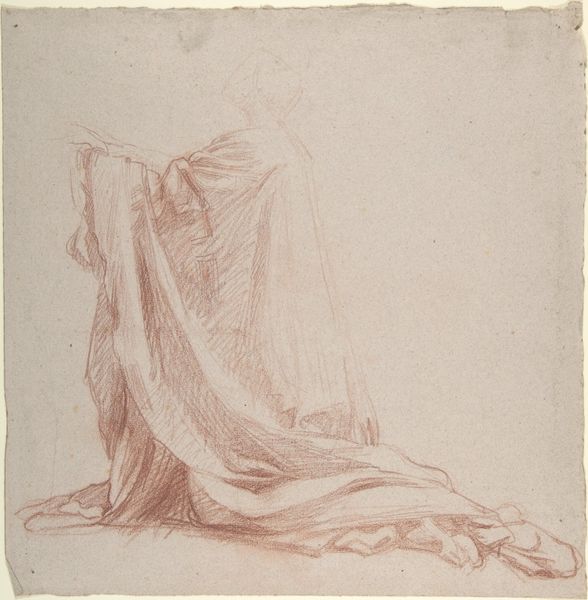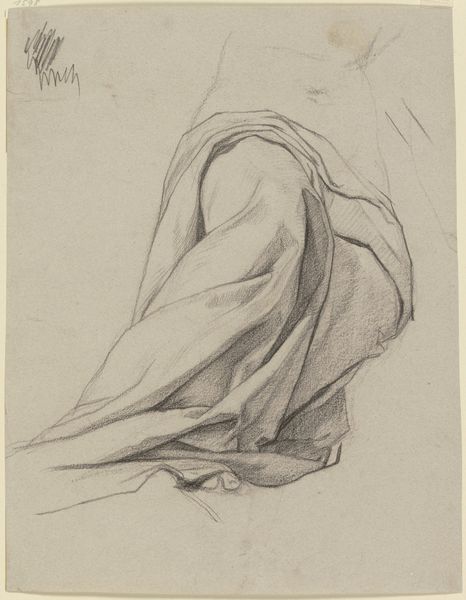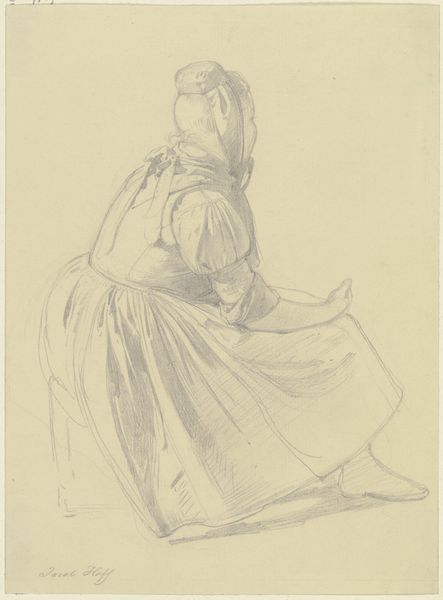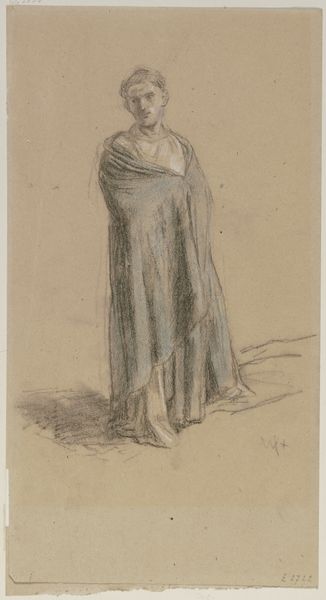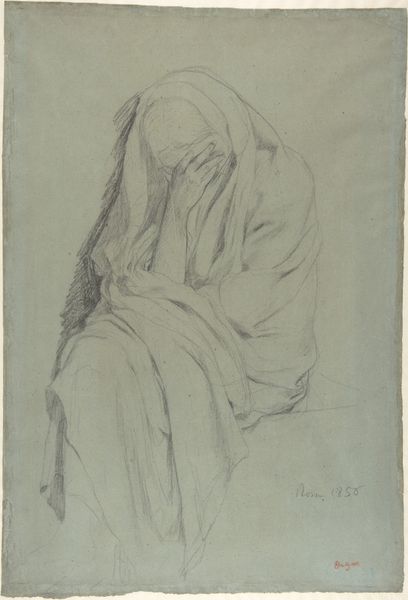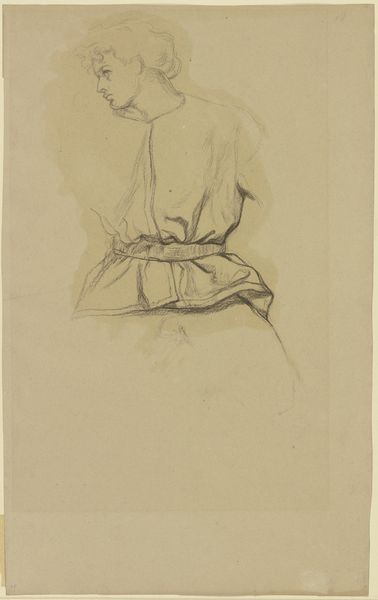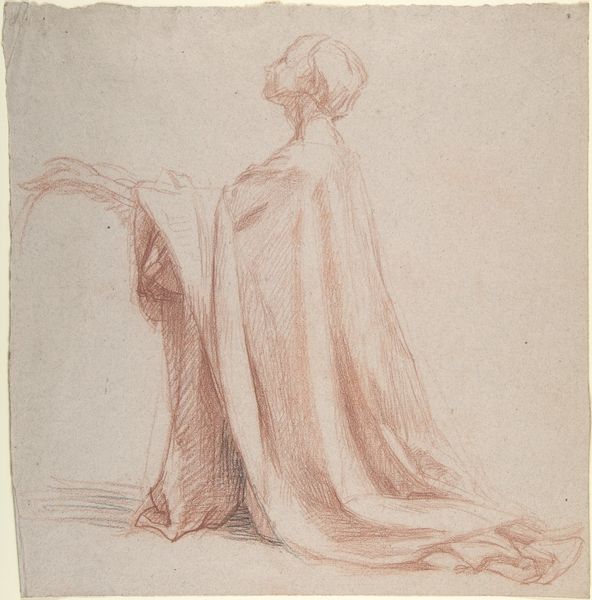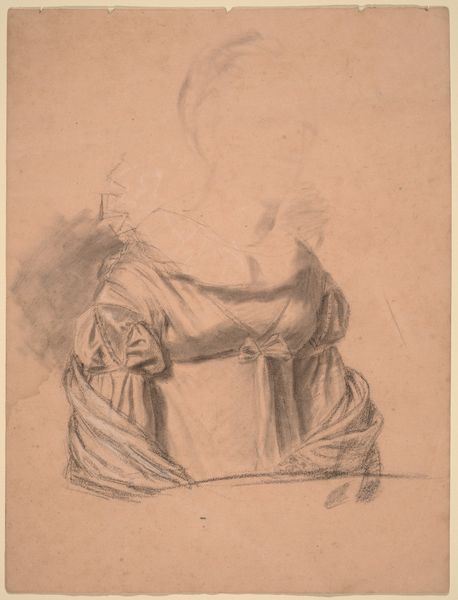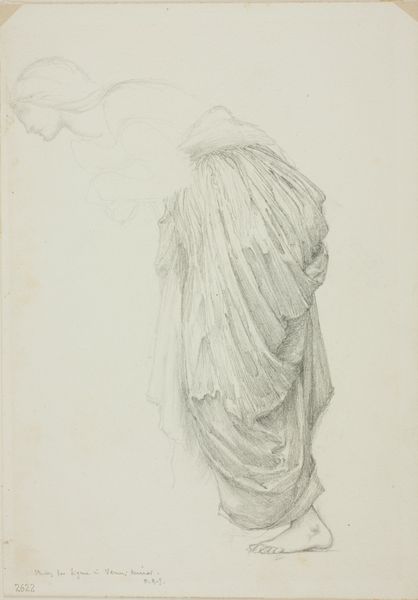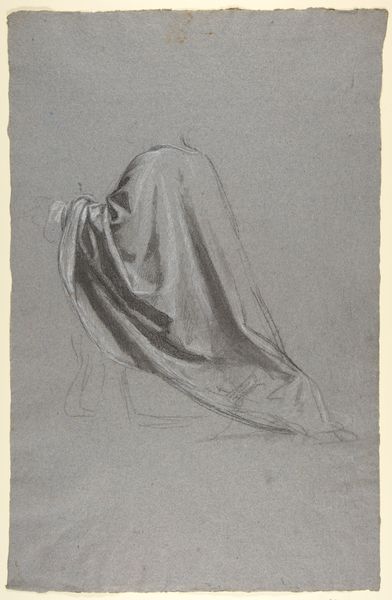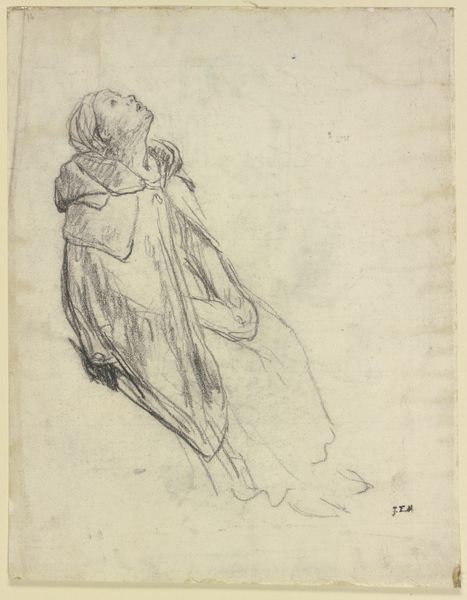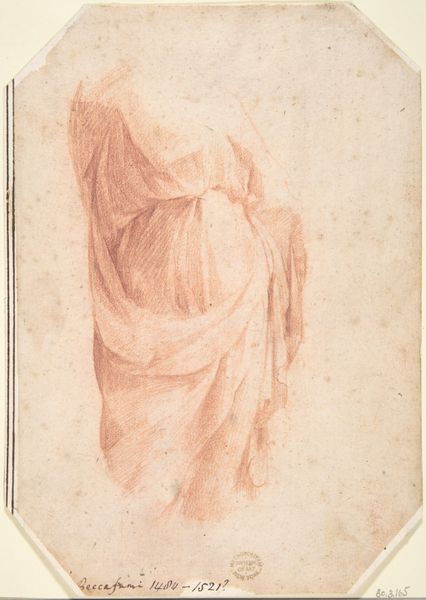
Drapery Study for Sainte Clotilde (middle register; study for wall paintings in the Chapel of Saint Remi, Sainte-Clotilde, Paris, 1858) 1830 - 1875
0:00
0:00
Dimensions: 18 7/16 x 11 15/16 in. (46.8 x 30.3 cm)
Copyright: Public Domain
Curator: This is a drawing by Isidore Pils, a study of drapery for the Sainte-Clotilde chapel murals, dating sometime between 1830 and 1875. The drawing is located at the Metropolitan Museum of Art. Editor: Oh, I'm immediately drawn to how delicate the pencil strokes are. It has a dreamlike quality, like peering into a faded memory. Curator: Absolutely. Pils clearly used this study to explore the play of light and shadow on fabric. What kind of fabric do you suppose it is? Editor: Given the period and the commission, probably linen or perhaps wool. Something that would hold the folds dramatically but also be readily available. I am interested in the repetitive motion of creating multiple versions for practice. Imagine Pils's workspace and the pile of these sketches generated with some to be approved and others cast aside. Curator: That's fascinating! The labor of visualizing drapery, then actually rendering it in monumental form is what it all amounts to. To look closely at one fold and have it lead the way to envision the whole, larger purpose of the chapel mural is something magical in my estimation. Editor: Do you think that Pils worked from life or was he looking at a model when completing the drapery studies? There is a strong possibility the chapel project used assistants and that the creation of studies like this was undertaken collaboratively. Curator: I suspect there may have been a collaborative element. I agree it is not likely the master artist performed everything on his own. Think about the sheer volume of work! So many hands shaping the artwork to be. It lends a humanizing touch to the grand narrative. Editor: Precisely! I suppose we are then left with a question not so much of “inspiration” but of material construction as Pils was experimenting, through manual means, on cloth studies intended as design tools for larger devotional projects. Curator: Indeed. I see it as a meditation on devotion itself. Thank you, this new way of regarding the artwork helps to reflect on the emotional qualities imbedded within material realities.
Comments
No comments
Be the first to comment and join the conversation on the ultimate creative platform.
